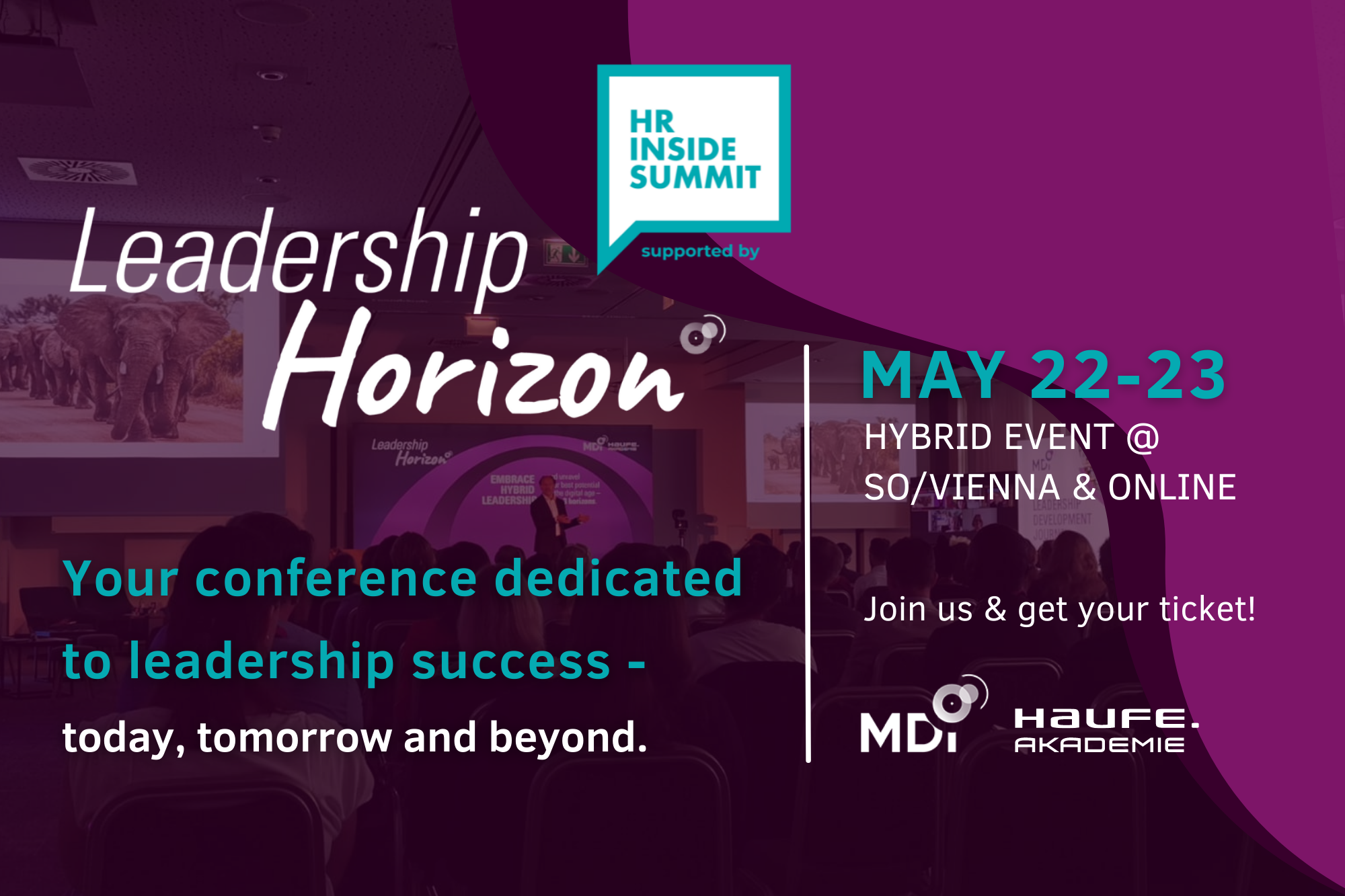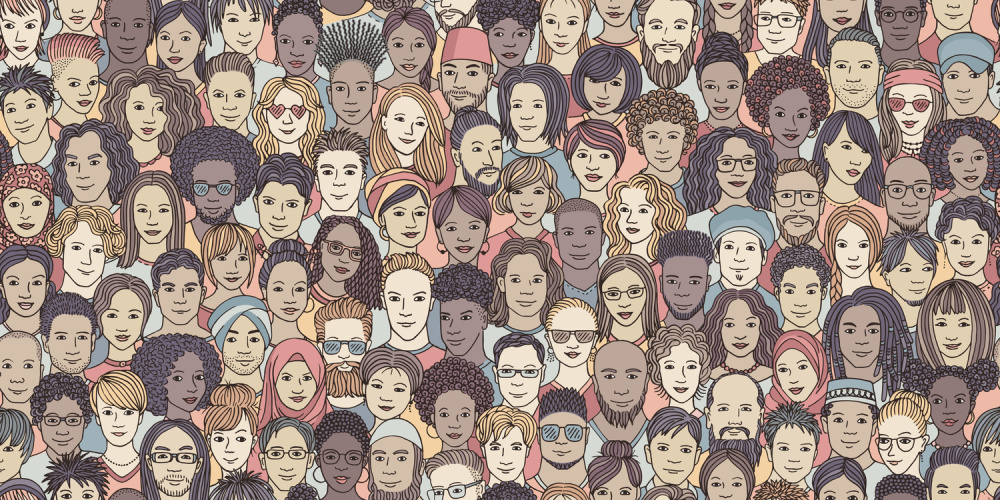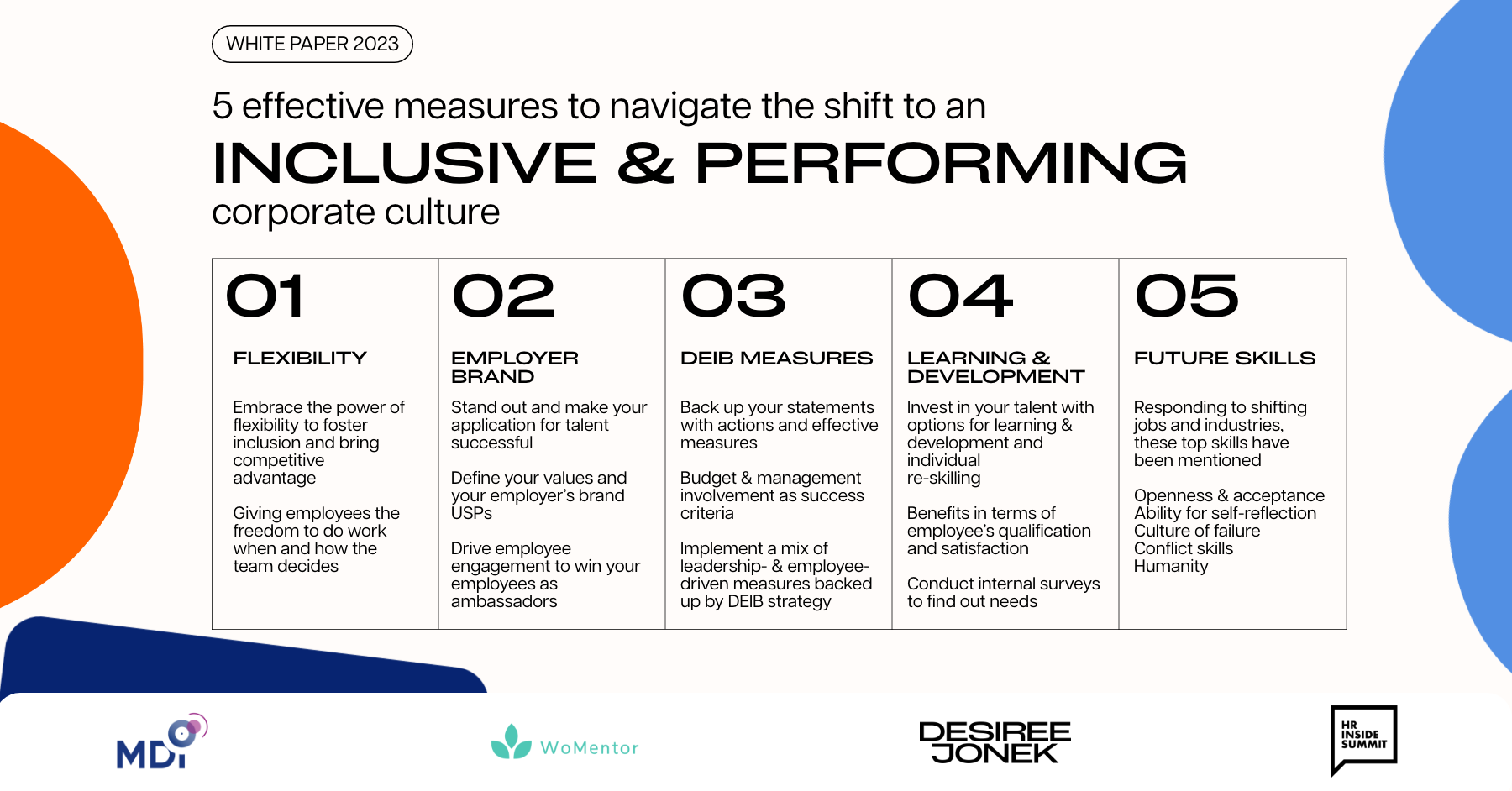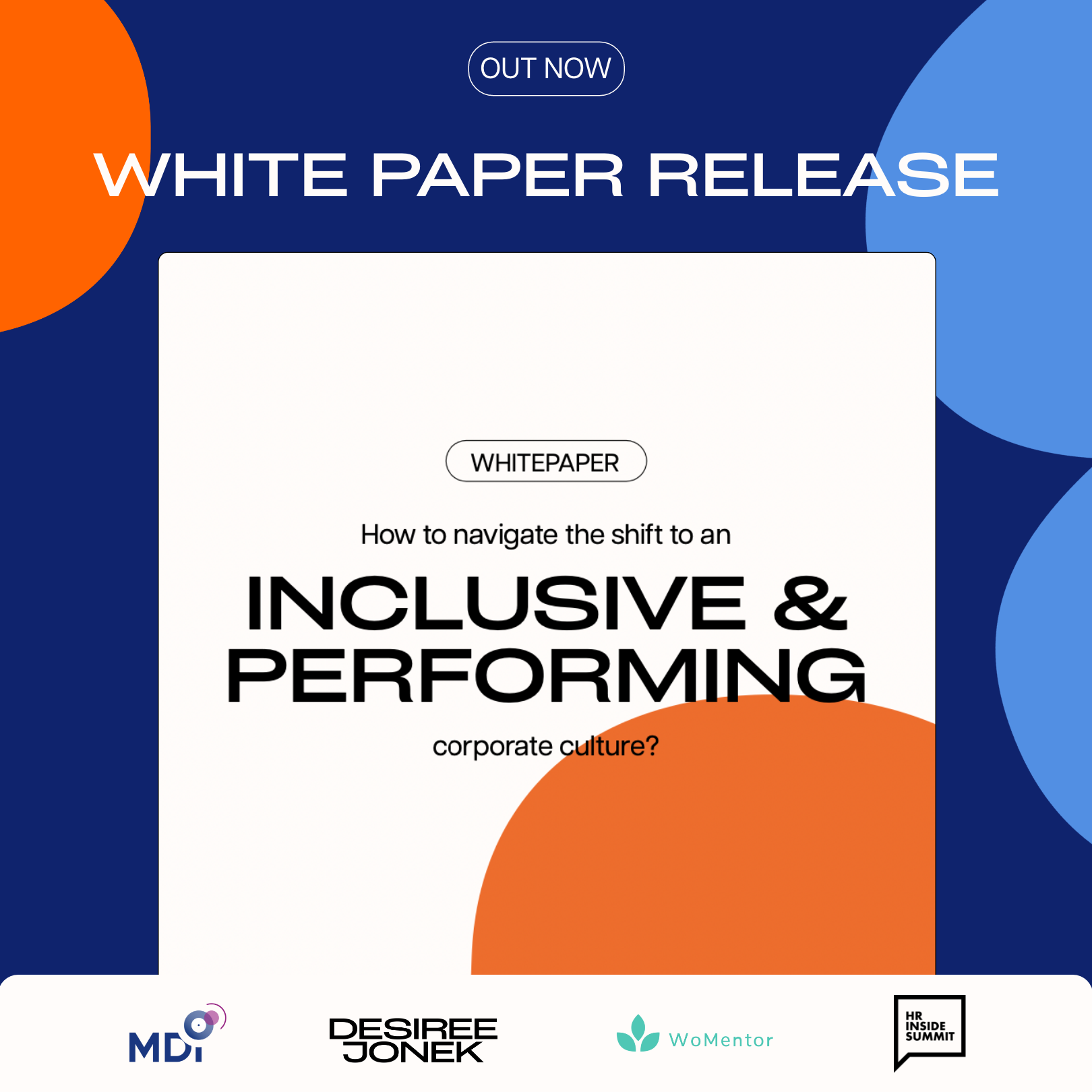5 measures for an integrative corporate culture
In this interview, we ask Desiree Jonek , co-founder of WoMentor and the author of the brand new paper “5 effective measures to navigate the shift to an inclusive and performing corporate culture “, 3 big questions about Diversity, Equity and Inclusion (DEI):
Please share with us what diversity, equity, and inclusion mean to you and why you decided to publish this white paper.
Diversity means inviting everyone to the party, while inclusion means inviting everyone to dance. Diversity is a fact in our society – but it is our choice as individuals, as leaders and as employers, to make inclusion happen.
Unfortunately, we still see a lot of structural inequality and discrimination in our society – lacking representation of women and minorities in leadership and technical roles, a prevailing gender pay gap of at the moment 36% in Austria, stereotypical role models for all genders, insufficient child care infrastructure, too little acceptance for fathers to go on parental leave – to name only a few of the current challenges.
Me and my colleagues don’t get tired to draw the attention to these societal issues. However, I think it’s crucial that we understand our scope for action and the impact we can have if we act against inequality. I increasingly get requests by company leaders who want to know what they can do in order to improve the diversity in their company.
And this makes me optimistic – because when there is a will, there will be a way. This is the reason why I decided to publish my latest white paper – in order to provide room for action, to give concrete recommendations, which 5 measures have proven to be effective in order to create a healthy, performing and inclusive company culture.
Even though my paper is published on International Women’s Day, this is not only about Gender. Including all genders in your company is only one out of six diversity dimensions. The goal is to create a truly inclusive (company) culture, equally represented by people of different ages, Genders, ethnicities, races, sexual orientations, as well as people with disabilities. My mission is to empower company leaders to make this vision come true.
What do you think are the biggest challenges in creating a diverse environment in learning & development? And are these different from the challenges that leaders themselves face?
The interviews with especially general managers made it clear that the creation of an inclusive company culture is only one out of many strategic priorities that leaders currently juggle. Additionally, many simply don’t know where to start in order to create an inclusive culture.
For learning and development, I think there are two major take-aways: First, learning and development does contribute to a more healthy and performing company culture, because you invest in your talent by re- and up-skilling.
Second, it will even have a positive effect on inclusion, if you empower your staff and your leaders to become more inclusive in the way they think and act. We know since a long time that heterogenous teams outperform homogenous ones – but only when well managed.
And leaders can only manage heterogenous and diverse team well, when they understand that it does make a difference, who is on their team, that a person with disabilities or with a migration background has a different life reality and needs than an able-bodied, local, for instance.
It requires inclusive skills, that also means leaders need to learn in order to become confident and inclusive leaders.

In your article, you talk about 5 effective measures to manage the shift to an inclusive and high-performing corporate culture. Can you give us more details on your approach and some practical implementation tips?
The insights in my white paper come from interviews with HR and General Managers, from all generations – I talked to Gen Z’s, Gen X’s, Gen Y’s & Baby Boomers, backed up with latest literature and studies by reputable sources.
It’s important to me to provide practical recommendations that leaders, respectively HR departments, can follow or take inspiration from. So, what are the five measures that will enable a shift toward a more healthy and inclusive company culture?
First, the degree of flexibility does make a huge difference. It is recommended to move toward increasing flexibility, when and how work will be done. Various studies prove the efficiency, and it also has a positive effect on the inclusivity of your culture – for example to be able to better balance care work for family and professional work.
Second, recruiting has turned upside-down: since it’s no longer the applicants who apply, but the companies who have to apply to get and retain talent – your employer brand must be strong and represent your USP, why everyone would like to work for you.
Third, in times of talent shortage – and the younger generation taking a diverse leadership as a hygiene factor – an inclusive corporate culture driven by and backed-up with measures for diversity, equity, inclusion and belonging is essential. In this chapter you will find plenty of good DEIB practices to get inspired from.
Fourth, learning & development enables you to both keep your talent skilled and prepared for the fast changing technological requirements, and also motivated and satisfied with a potential positive effect on retention.
Lastly, future skills not to underestimate to respond to these shifts are openness and acceptance, conflict skills, the ability to learn from failures and mistakes. If you’d like to assess where your company is at – there is a corporate culture checklist included to get a first impression of your company’s status quo.
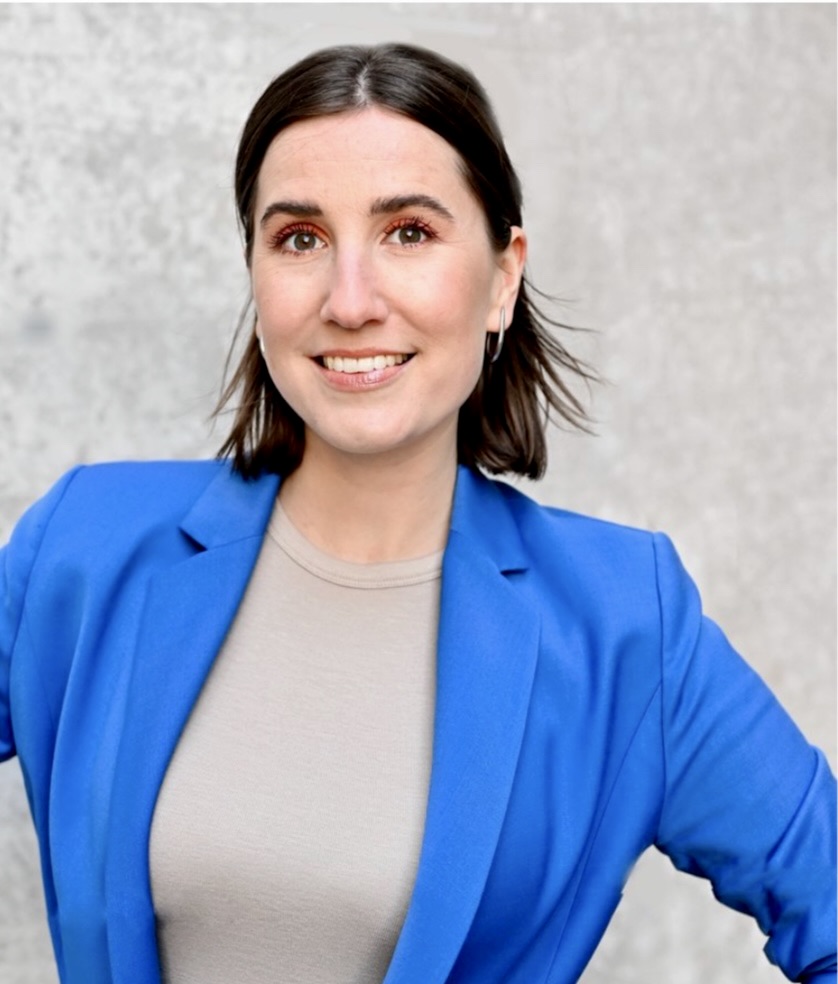
Desiree Jonek
Trainer for Diversity, Equity & Inclusion and the co-founder of WoMentor
Désirée Jonek-Lustyk strategically accompanies organizations and trains leaders in shaping and effectively implementing an inclusive organizational culture. Since 2019, she has been running the mentoring program WoMentor and built up a community of over 1.200 people.
As a TEDx speaker, she also delivers inspiring keynotes on achieving fair participation and responding to a shift in the working world. As a Gen Y, her strength is serving as a bridge maker between generation X and Z. She is currently based in Austria (Vienna / Styria).
What serves you next?
